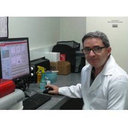Toxicological evaluation of an aqueous suspension from leaves and stems of Petiveria alliacea L. (Phytolaccaceae).
Keywords
Abstract
BACKGROUND
Petiveria alliacea L. (Phytolaccaceae) is used in folk medicine due to its antispasmodic, diuretic, hypoglycemic, abortive, anti-inflammatory and anticancerogenic properties. Although P. alliacea is considered toxic by people, its toxicity remains a concern since it is strongly dependent on the extraction method and the part of the plant used during tests. Even if some healers prefer to use the aerial parts in a liquefied form or by chewing them, instead of decoctions or infusions, no toxicological studies exist using whole dried stems and leaves.
METHODS
The toxicity of a suspension of the powder from the leaves and stems of P. alliacea was assessed in Sprague Dawley rats by oral administration using two tests: 1) the acute toxic class method, which allows classification of substances according to their intrinsic toxicity and 2) the repeated dose 28-day method, following the guidelines 423 and 407 respectively from the Organization for the Economic Cooperation and Development. Chemical characterization of this powder was performed by GC-MS, UV-fluorescence, proximate and elemental analysis.
CONCLUSIONS
P. alliacea powder from stems and leaves was classed in the hazard category 5 (LD50 > 2000mg/kg) according to the acute toxicology study. There were no toxicity signs at 1000mg/kg in the repeated dose study, although higher values of total leukocytes were found in the satellite and males of the experimental group, which were attributed to the immunomodulatory properties of this plant. According to GC-MS, the prevailing compounds identified were phytol, (R)-(-)-(Z)-14-methyl-8-hexadecen-1-ol, 1-(2-hydrohyethyl)-1,2,4-triazole and methyl β-dimethylaminoisobutyrate. In conclusion, the oral administration of the P. alliacea powder to Sprague Dawley rats did not result in deaths and was not associated with adverse effects reflected in the general condition, body weights or histopathological abnormalities.


